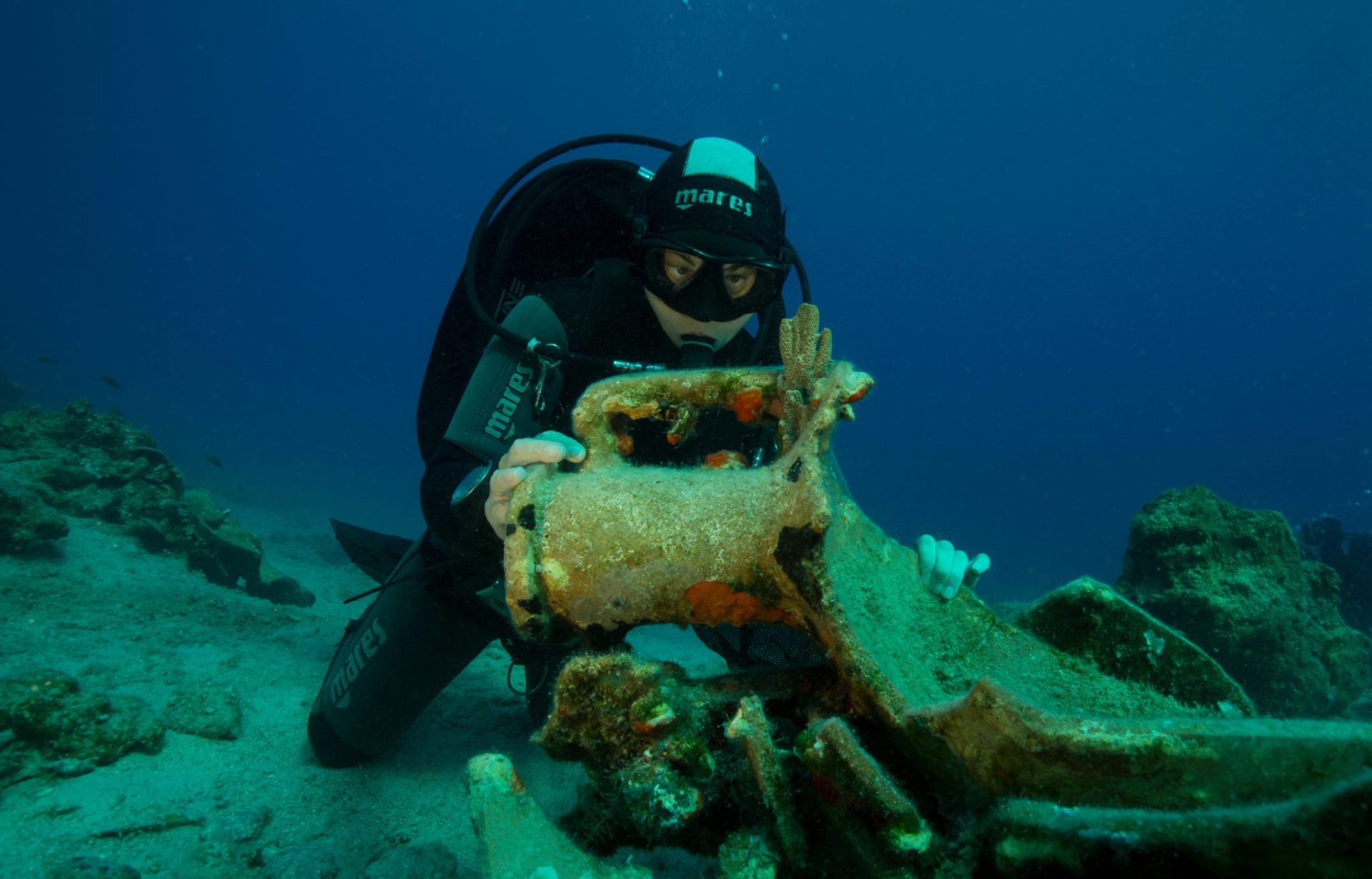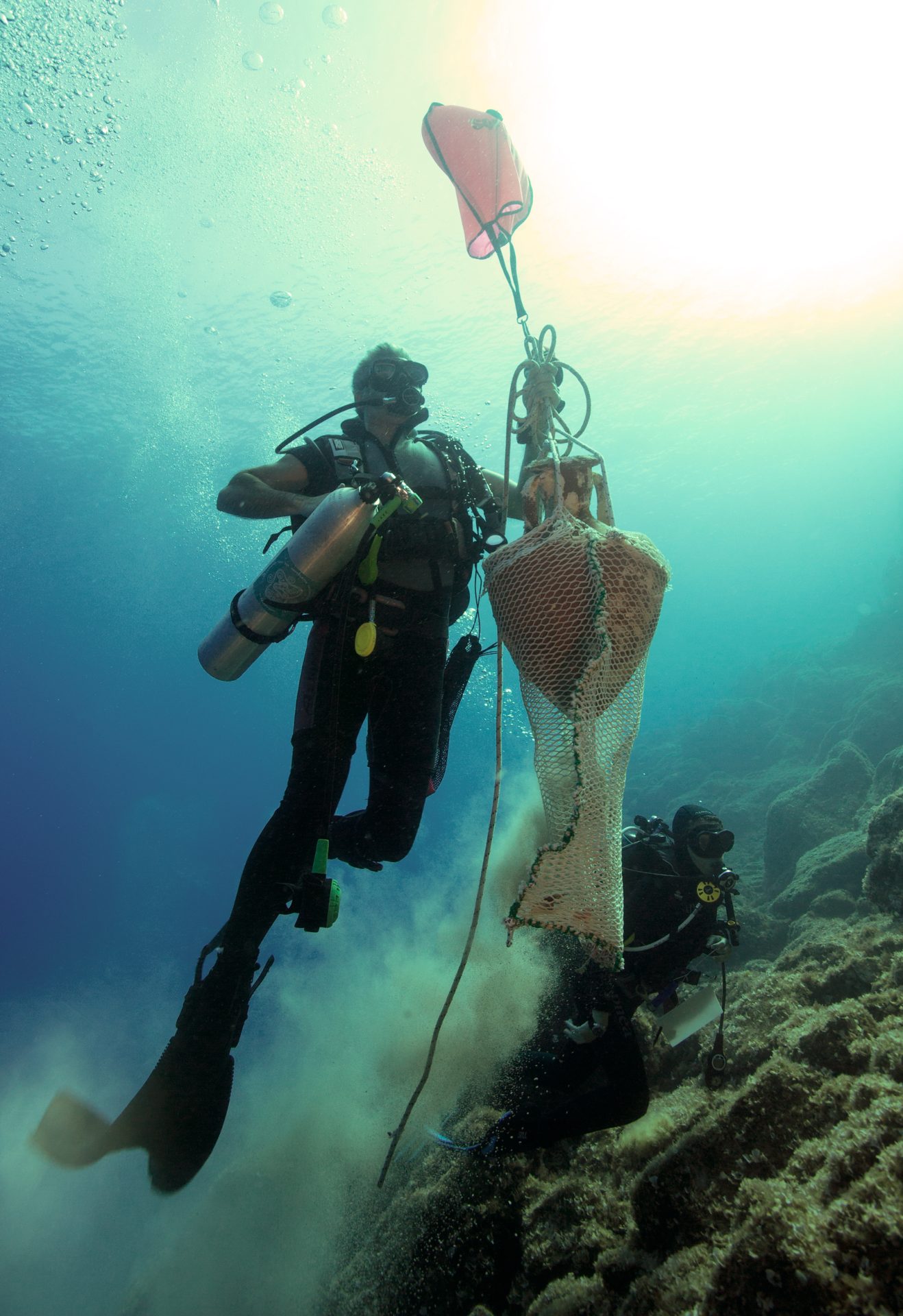
The first underwater archaeological research period of the Ephorate of Underwater Antiquities off the island of Levitha has yielded some important discoveries, according to the Ministry of Culture and Sports.The research was conducted from June 15 to 29, 2019, under the direction of archaeologist Dr. Georgios Koutsouflakis.The most noteworthy findings of the 2019 survey include a mixed set of amphorae from the cities of Knidos, Kos and Rhodes, Phoenicia and Carthage. The vases were dated to just before the mid-3rd century BC, a time when the Ptolemies and Antigonids were in a position to seize maritime sovereignty in the Aegean.

Amphora found on sea bottom off Levitha. Photo: Ministry of Culture and Sports
The Ephorate is researching a total of five wrecks found off the island of Levitha alone. However, there were other shipwrecks as well: one with a cargo of amphorae from Knidos, dating back to the same period, while three other shipwrecks had carried cargoes of Kos amphorae, from the 2nd and 1st centuries BC and 2nd century AD.One ship was found to have been carrying amphorae from the North Aegean from the 1st century BC, along with another wreck which had a cargo of Rhodes amphorae from the 1st century AD. The final shipwreck the Ephorate studied featured amphorae dating back to the early Christian period.Other important findings include a granite anchor pole which was lifted from a depth of 45 meters, weighing 400 kg (882 pounds). The anchor most likely dates from the 6th century BC and is the largest stone pillar from the Archaic period ever found in the Aegean.The pole’s size suggests it had belonged to a ship which must have been of a colossal size for its time.

Diver recording the discovery of ancient amphora lying atop the seabed of the Aegean. Photo: Ministry of Culture and Sports
Koutsouflakis’ study this summer is part of a three-year research project taking place from 2019-2021, with the aim of identifying and documenting ancient shipwrecks in the coastal zone of this archipelago, which appears to have played a key role in the ancient navigation of the Aegean.Levitha, known in Ancient Greek as “Lebinthus” or “Lebinthos,” is the easternmost of a cluster of four isolated islands comprising Levitha, Mavria, Glaros and Kinaros, which bridge the sea passage from the Cyclades to the Dodecanese island chains.The islands are located along the 37th parallel between Leros and Amorgos.
Intact ancient amphora brought to the surface as part of the 2019 Ephorate of Underwater Antiquities study. Photo: Ministry of Culture and Sports

Intact ancient amphora brought to the surface as part of the 2019 Ephorate of Underwater Antiquities study. Photo: Ministry of Culture and Sports





